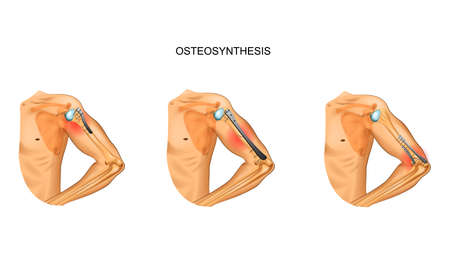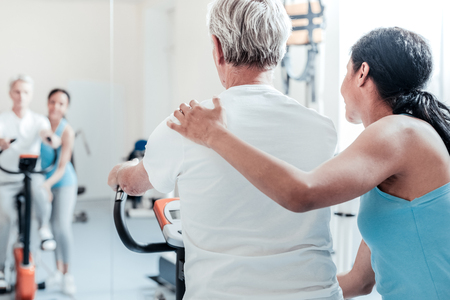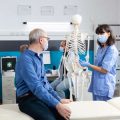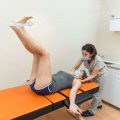Understanding Chronic Back Pain in the U.S.
Chronic back pain is one of the most common health problems faced by adults in the United States. It’s defined as pain that lasts for 12 weeks or longer, even after an initial injury or underlying cause of acute back pain has been treated. This condition can impact every aspect of daily life, from working and caring for family to simply enjoying favorite activities.
Prevalence of Chronic Back Pain in America
Millions of Americans struggle with chronic back pain each year. According to the Centers for Disease Control and Prevention (CDC), about 20% of adults in the U.S. report experiencing chronic pain, and back pain is a leading complaint. This issue affects people of all ages but is especially common among those over 30 years old.
How Common Is Chronic Back Pain?
| Age Group | Percentage Reporting Chronic Back Pain |
|---|---|
| 18-29 years | 8% |
| 30-44 years | 17% |
| 45-64 years | 25% |
| 65+ years | 27% |
Common Risk Factors Affecting Diverse Populations
Chronic back pain does not discriminate—people from various backgrounds and lifestyles may experience it. However, some risk factors are more prevalent in certain groups:
- Sedentary Lifestyle: Sitting for long hours at work or home increases risk.
- Obesity: Extra weight puts more strain on the spine and back muscles.
- Physical Job Demands: Lifting, bending, or repetitive motions can lead to back problems.
- Aging: As we get older, discs in the spine lose flexibility and strength.
- Poor Posture: Slouching while sitting or standing can contribute to long-term discomfort.
- Certain Medical Conditions: Arthritis, osteoporosis, and other conditions can increase risk.
- Mental Health Factors: Stress and depression can make chronic pain feel worse or harder to manage.
Diversity and Disparities in Back Pain
The experience of chronic back pain can be different depending on socioeconomic status, access to healthcare, occupation, and cultural background. People living in rural areas or with limited health insurance coverage may have fewer resources for treatment and support. Recognizing these differences helps physical therapists tailor care plans that meet each person’s unique needs.
2. Initial Assessment and Individualized Treatment Planning
When it comes to managing chronic back pain without surgery, the first step is a thorough clinical evaluation. In the United States, physical therapists work closely with patients and other healthcare providers to make sure each person gets the care they really need—not just a one-size-fits-all approach.
The Importance of Clinical Evaluation
A good assessment looks at more than just where your back hurts. Physical therapists in the U.S. will ask about your medical history, daily activities, work habits, and any previous treatments you’ve tried. They may also check your posture, flexibility, strength, and how you move. This helps them understand what’s causing your pain and how it affects your life.
Common Elements of an Initial Back Pain Assessment
| Assessment Area | What It Involves | Why Its Important |
|---|---|---|
| Medical History Review | Discussing past injuries, surgeries, medications, and overall health | Identifies underlying conditions that may affect treatment |
| Pain Evaluation | Describing pain location, intensity, triggers, and relief methods | Helps target therapy techniques to the patient’s needs |
| Physical Examination | Assessing posture, range of motion, muscle strength, and flexibility | Reveals physical limitations or imbalances contributing to pain |
| Lifestyle Assessment | Reviewing daily routines, job duties, exercise habits, and stress levels | Uncovers factors outside the clinic that might influence recovery |
| Functional Testing | Observing basic movements like walking or bending | Shows how pain impacts everyday activities |
Customizing Physical Therapy Plans in the U.S.
No two people experience back pain exactly the same way. That’s why American physical therapists create individualized treatment plans based on what they learn during the assessment. This plan might include specific exercises, manual therapy techniques, or recommendations for modifying home and work environments. Therapists often set realistic goals together with patients—like improving mobility so you can play with your kids or return to work comfortably.
The Value of Personalization in American Healthcare
The U.S. healthcare system encourages collaboration between patients and providers. Customizing your physical therapy means you’ll get support that fits your lifestyle and goals—not just a generic list of exercises. By focusing on what matters most to you, physical therapists help you build confidence and take an active role in managing chronic back pain without surgery.

3. Core Physical Therapy Techniques for Chronic Back Pain
Physical therapy is a cornerstone of non-surgical treatment for chronic back pain in the United States. American physical therapists use a variety of proven methods to help patients manage pain, improve mobility, and restore function. Here are some of the most widely used core techniques:
Evidence-Based Therapeutic Exercises
Therapeutic exercises form the foundation of most physical therapy programs. These exercises are designed to strengthen muscles, enhance flexibility, and support better posture—all of which help reduce back pain over time. Therapists tailor exercise plans to each persons needs, but the following types are common:
| Exercise Type | Purpose | Example |
|---|---|---|
| Core Strengthening | Stabilize the spine and pelvis | Bridges, planks |
| Flexibility Training | Increase range of motion and reduce stiffness | Knee-to-chest stretch, hamstring stretch |
| Aerobic Conditioning | Improve overall endurance and blood flow to tissues | Walking, stationary cycling |
| Functional Movement Training | Enhance daily activity performance | Squats, sit-to-stand exercises |
Manual Therapy Techniques
Manual therapy involves hands-on techniques that physical therapists use to relieve pain and improve movement. In American clinics, these approaches are often combined with exercise for best results. Common manual therapy methods include:
- Joint Mobilization: Gentle movements of the spine or joints to restore normal motion.
- Soft Tissue Mobilization: Massage-like techniques that target tight muscles and connective tissues.
- Myofascial Release: Slow, sustained pressure on areas of tension to release restrictions in the fascia (the connective tissue around muscles).
Movement Strategies and Education
A big part of successful therapy is teaching patients how to move safely during everyday activities. American physical therapists often provide education on:
- Lifting Techniques: How to bend and lift objects without straining the back.
- Postural Training: Tips for sitting, standing, and working at a desk to avoid putting extra stress on the spine.
- Pacing Activities: Learning how to break up tasks and avoid overdoing it, which helps prevent flare-ups.
- Body Mechanics: Guidance on moving efficiently during daily life—like getting out of bed or into a car.
Commonly Used Tools in U.S. Physical Therapy Clinics
| Tool/Device | Main Use |
|---|---|
| Therabands/Resistance Bands | Add resistance for strength exercises without heavy equipment. |
| Bosu Ball/Balance Board | Improve balance and core stability. |
| TENS Unit (Transcutaneous Electrical Nerve Stimulation) | Pain relief through gentle electrical stimulation. |
| Cushions/Foam Rollers | Aid stretching and self-massage for muscle tightness. |
The Importance of Personalization and Consistency
No two people experience back pain the same way. That’s why U.S. physical therapists emphasize creating personalized plans based on each person’s goals, lifestyle, and progress. Consistency with home exercises and following therapist advice plays a huge role in long-term success with chronic back pain management.
4. Integrating Education and Lifestyle Modifications
Empowering Patients Through Education
Physical therapists in the United States focus on more than just exercises and manual therapy—they also prioritize patient education. By helping people understand the root causes of chronic back pain, therapists empower patients to make informed choices about their daily routines. This education typically covers topics like healthy posture, proper body mechanics, and strategies for avoiding unnecessary strain during common American activities at work and home.
Posture and Ergonomics in American Daily Life
Many Americans spend long hours sitting at desks or using digital devices. Physical therapists often teach patients simple ways to improve their posture both at work and at home. Here’s a quick look at some common recommendations:
| Situation | Recommended Modification |
|---|---|
| Sitting at a Desk (Office/Home) | Use an adjustable chair with lumbar support; keep feet flat on the floor; position monitor at eye level |
| Lifting Groceries or Kids | Bend at the knees, not the waist; hold objects close to your body; avoid twisting movements |
| Standing for Long Periods | Shift weight between legs; use a footrest occasionally; wear supportive shoes |
| Using Smartphones/Tablets | Hold devices at eye level; take frequent breaks to stretch neck and shoulders |
Lifestyle Adjustments That Make a Difference
Physical therapists encourage actionable lifestyle changes that fit into busy American schedules. Small adjustments can lead to big improvements in managing chronic back pain. Some popular suggestions include:
- Regular Movement Breaks: Set reminders to stand up, stretch, or walk every 30-60 minutes, especially when working from home or in an office.
- Active Transportation: Choose walking or biking for short trips instead of always driving.
- Home Exercise Routines: Incorporate simple stretches or strengthening exercises recommended by your therapist into your daily routine.
- Sleep Position Awareness: Use pillows for support and try to maintain spinal alignment while sleeping.
Building New Habits Together
The partnership between a physical therapist and their patient is key. Therapists often help set realistic goals, track progress, and adjust recommendations based on what fits best with the patient’s work schedule, family life, and personal preferences—all important aspects of American culture. By focusing on education and lifestyle changes tailored to each individual, physical therapists provide tools that support long-term back health.
5. Collaborative Care and Community Resources
The Importance of Team-Based Care
Managing chronic back pain is often most effective when a team of healthcare professionals works together. In the United States, this team-based approach means physical therapists, primary care doctors, pain specialists, and sometimes psychologists all share information and work toward your recovery. This kind of coordinated care helps make sure you get well-rounded support that addresses both your physical symptoms and emotional well-being.
When Referrals Make a Difference
Your physical therapist might notice if you need extra help beyond movement exercises. They can refer you to other specialists like:
| Specialist | How They Help |
|---|---|
| Pain Management Doctor | Offers advanced non-surgical treatments like injections or medication management |
| Occupational Therapist | Helps you adapt daily activities to reduce pain and improve function |
| Mental Health Counselor | Supports coping strategies for stress and mood changes related to chronic pain |
| Orthopedic Specialist | Evaluates spine health if symptoms change or worsen significantly |
Utilizing Local Community Programs in the U.S.
Many communities across the U.S. offer programs and resources for people living with chronic back pain. These services can provide social support, exercise options, education, and encouragement outside of medical offices. Here are some common community resources:
- YMCA or Local Recreation Centers: Group fitness classes, aquatic therapy, or low-impact exercise sessions tailored for people with chronic pain.
- Chronic Pain Support Groups: Peer-led groups where you can share experiences, learn practical tips, and find emotional support from others who understand what youre going through.
- Community Health Workshops: Sessions on posture improvement, stress management, or safe ways to stay active.
- Nonprofit Organizations: Groups like the American Chronic Pain Association offer online forums, educational webinars, and printed guides to help manage daily challenges.
How to Access These Resources?
- Ask your physical therapist or doctor for local recommendations—they often know about helpful neighborhood programs.
- Check with city recreation departments or local hospital websites for current class schedules or support groups.
- If transportation is an issue, look for virtual classes or telehealth options which have become more available across the U.S.
Remember: You Are Not Alone!
The journey with chronic back pain can feel isolating at times. By building a care team around you and connecting with community resources, youll have more tools and support as you work toward feeling better.


